THE IDEA
A talented, creative writer invents a story about an object. Invested with new significance by this fiction, the object should — according to our hypothesis — acquire not merely subjective but objective value. How to test our theory? Via eBay!
THE PROJECT
- The project’s curators purchase objects — for no more than a few dollars — from thrift stores and garage sales.
- A participating writer is paired with an object. He or she then writes a fictional story, in any style or voice, about the object. Voila! An unremarkable, castoff thingamajig has suddenly become a “significant” object!
- Each significant object is listed for sale on eBay. The s.o. is pictured, but instead of a factual description the s.o.’s newly written fictional story is used. However, care is taken to avoid the impression that the story is a true one; the intent of the project is not to hoax eBay customers. (Doing so would void our test.) The author’s byline will appear with his or her story.
- The winning bidder is mailed the significant object, along with a printout of the object’s fictional story. Net proceeds from the sale are given to the respective author. Authors retain all rights to their stories.
- The test’s results — photos, original prices and final sale prices, stories — are cataloged on this website. The project’s curators retain the right to use these materials in other venues and media. For example: Maybe we’ll publish a book.
THE CURATORS
Rob Walker’s 2008 book, Buying In, and Joshua Glenn’s 2007 book, Taking Things Seriously, examined — using very different approaches — the manifold ways in which all of us, whether we realize it or not, invest inanimate objects with significance. But “significance” is such a hazy concept… so they agreed that it would be both interesting and fun to set up an experiment in which significance was artificially cooked up under controlled conditions and applied to insignificant objects.
KEEP TABS ON THE PROJECT
Click here to subscribe to (irregular, infrequent, but witty and fascinating) email updates about the Significant Objects project. You may also follow the project on Twitter: @SignificObs.
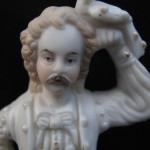
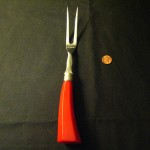

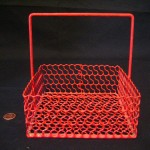
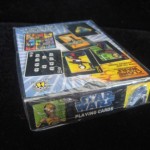
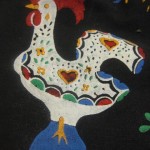
As if it wasn’t already hard enough for those of us afflicted with the acquisition bug to let go of thrift scores, now you have to go and charge found objects up with capital-S significance? Sirs, you are devious. I have that Sanka ashtray in my “watched items” queue.
Finally a way to stock my house with meaningful but slightly askew trinkets. This is fantastic! And Kim, you won’t be getting that ashtray that easily.
May I humbly submit a minor criticism of your evaluative methodology? I think the correct measure of story-value would be a comparison of object sale price with those of like items for sale on eBay. I note, for example, that Sante’s Sanka ashtray, with 6 days of bidding to go, has already reached the buy-it-now price of an identical object offered by THE GOLFWIDOW (http://tinyurl.com/n354ge).
This is a serious project!
But you’re missing a trick. You’ve just invented a new form of financial derivative — and now, more than ever, the world needs the Exotic Narrative Referent Vehicle to re-boot the ailing monetary system.
These new ENRVs could be bonds that hedge future drops/losses and differentials between the cash paid for the item and the symbolic value that the fictional narrative adds to the object-cost. They create surplus symbolic value (as conventional brands do) but act like quantum singularities (existing only for the brief flash of time wherein object, narrative, buyer and cash are uniquely unified before collapsing in on itself.)
Just to be on the safe side, get someone to insure the objects (and the words used from the English Language in the stories, and the hedges on the ENRV, either combined or separately) up to many multiples of their original value, and sub-divide that insurance block into multiple sub-sections that you can call ENRV Dominant Residuals.
Also insure both Linear and Cyclical Time. Trade in derivatives based on ever decreasing temporal halves that stretch towards the infinite — this will function as a hyper-exotic derivative of the collapsed moment in time-space that exists between buyer identifying with the narrative and the ultimate sense of remorse post-purchase. This gap will never be resolved and will be called the Xeno Half-Futures Option.
That way everybody gets a slice of this pie. Indeed, there will be far, far more slices than original pie. These complex vehicles will provide a near infinity of slices, all from a single pie.
It can’t fail, can it?
Josh
I like the project you and Rob Walker are developing. Eager to see more of it.
It is key to my world view (and to my book in the works, SLOW READING) to see that we humans have a lot less agency than we think and that objects have a lot more agency. My way of coming to understand how object have power is by attending to Antonioni, Benjamin, Latour, Hutchins, Bergson.
I’ll spread the word.
See you this summer?
Lindsay
Great project! As far as “significant” objects enjoying an increased monetary value at auction: A long time ago, I used to work in the advertising department of auction house, Christie’s, where they’d sometimes put a lot of emphasis on certain objects’ so-called “provenance.” Being the subject of one of these stories will surely give each of these objects a strange sort of value-enhancing (yet fictional) provenance.
Why are the pennies included in the picture?
Thanks, everyone, for the comments!
Professor S and Greg (aka Professor X), thanks for the advice. You’re probably right. But your suggestions would take so much WORK.
Gladys — it is common to see pennies or other coins in eBay photos, to show the relative size of the item in question.
Cool project. This explains why I so badly wanted to buy items in the old J. Peterman catalog. With material desire, there is the near and the far that we long for. The authentic aviator sunglasses so well described in the catalog we the attainable nearby object. But they were needed to take us to the faraway destination – that of becoming the courageous adventurer of our dreams.
Pingback: The Significance of Significant Objects | eyecube
This is fascinating. I agree with the Prof’s suggestion about comparing story-value. But even without that data, it’s a great project. As for greg rowland’s ENRV’s…I sniff a wikipedia entry.
How do you get on the list of writers for the objects? I majored in creative writing but work in journalism and would love to do something like this every once in awhile.
Hi Annie,
Thanks, but right now we’re not looking for new writers per se. We have had many inquiries such as this, and I hope we will figure out a way to accommodate them. Please keep an eye on this site and I hope we’ll have news about that before too long.
Thanks for the interest.
I see this system being applied to art. An artist can submit a piece, a writer creates a story around it and it is put up for sale on eBay.
I’ve just created a series of my digitally manipulated photo artforms that is titled “Tall Tales” because I feel each image is “worth a thousand words”. But, I am not a writer and created the images so that viewers could concoct their own:
Tall Tales
I have always loved a good story, fable, legend and am intrigued with the visual aspects they inspire. As one encounters (reads, listens to) a fable, they conjure and imagine. In this series I wanted to reverse the process and create the visual and leave the story to the viewer.
Again, I’ve captured images of ephemeral, staged setups I arranged in the “real” world and altered them in my computer to strengthen their narrative possibilities. Some are quite realistic, others are dramatically altered, each with an eye for the unexpected.
Ellen
Pingback: HTMLGIANT / Significant Objects
Pingback: One Night Stanzas » Blog Archive » Procrastination Station #46
Wow, what a brilliant phenomenological experiment. I love it.
Thanks Mark, Michele, Ellen. And thanks Dylan — good to hear from you!
Can I be a writer?
Hello Julie. We have had many requests from people who want to contribute as writers, and that is very exciting. However, it’s also something we did not anticipate. We are working on a way to accommodate such requests, so please stay tuned to this site and hopefully we will be able to announce something about that soon.
What a beautiful idea, and what potential. Just one question: what drove the decision to appropriate the Salvation Army’s branding as a basis for the project’s logo? This intrigues me to no end.
Did you get your idea from Tahir Shah’s In Arabian Nights (2008) Chapter Six? In Omar bin Mohammed’s shop everything is free, but: “If you want to take an item,” he said, “then you have to buy the story attached to it.” … “How much does it cost to hear it?”
“Six hundred dirhams.”
“That’s eighty bucks,” I said. “The chest isn’t worth that.”
“I told you, the objects I’m giving away are not special at all. The chest looks nice but it’s worthless.”
Yeah, I’m with Freddy on this. My assumption all along was that the money was going to the Salvation Army, and it wasn’t until I saw his comment that I finally focused in on the logo and saw it was S.I. You need to change that.
I will say, otherwise, a fine project…
Pingback: Big (Kindle) Brother, Terris’ Time Tower and Judgmental Garbage Cans « CultureNet @ CapilanoU
I concur with this project. Last year I bought a faux fur coat in St John’s Nfld for $3.50. Last month at after wearing this coat on the beach, jet skiing in it and wearing it out with with just the underwear and promoting its fun, I elected to auction it off for charitable cause and make the coat a annual event, the coat raised $4000.00 for the Royal Lepage Womens Charitable Shelter Foundation. Its all about a story. People always buy into emotion and reason with logic. I love mankind!
It’s very difficult for me to believe that anyone thought — even for a moment — that ours was a Salvation Army project — despite our parodic/affectionate version of the SA logo. I wonder if the one or two people who were confused by our red-shield logo also get mixed up when they see someone wearing a t-shirt with the McDonald’s golden arches but it says “Marijuana”? — do they then attempt to score weed at McD’s? Anyway, we’ve decided to change our logo to the red mug version you see at the top of this page. It’s probably a better logo, anyway.
Pingback: MegCabot
Pingback: Significant Objects « Jason Baird Jackson
I just recently heard about the project and think it’s brilliant. I too would love to be a participant but understand that you are looking for ways for people to participate. In the meantime, I’ve decided to do it on my own. I won’t be selling the objects on ebay, but I will use little trinkets that I find at garage sales, thrift stores and antique markets as inspiration for my own creativity. Thank you for the wonderful idea.
Pingback: Objects of Significance? : Emergent Structures
Am doing a similar kind of project in England where I aim to change mundane and overlooked objects into art objects for sale. May be a link with this project. I find the monetary value of anything fascinating whether it be object or time and services. Our view of it all has become so distorted due to the ability to make things cheaply and quickly under exploitative conditions. It even reaches a point where our own value as people is mapped out by the amount of money we earn, effectively placing a monetary value on each and every one of us. Anyway I will get off my tangent now. My web page for Beautiful things project is here if folks are interested:
http://www.bethbarlow.com/completed_pages/beautiful_things.html